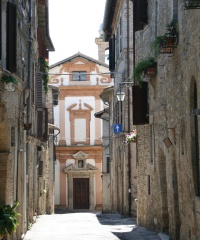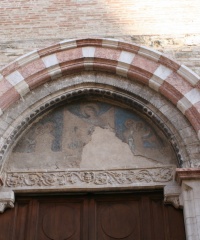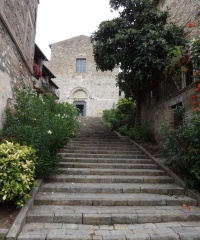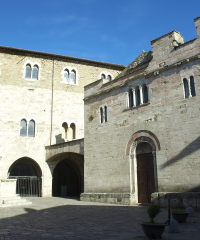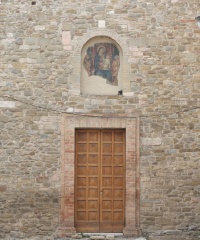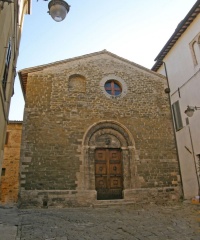In the church, restored in 17th, people can still admire a beautiful altarpiece painted by Andrea Camassei, which depicts the martyrdom of Santa Margherita. Behind the high altar is a fresco painted by Fantino in 1592. The monastery, founded in 1271…
It was built on an ancient oratory dedicated to St. George, donated by the Municipality to Blessed Giacomo Bianconi in 1291. As a sign of recognition for the fundamental role he played in the reconstruction of the town, after the siege of the…
Built at the end of the 13th century on the ancient church dedicated to Saint John the Baptist, it stands on the highest place in the city, where it was certainly a Roman temple. The gabled façade is adorned with an elegant rounded polystyle portal,…
The epigraph to the right of the portal allows us to date the construction of this building to 1195, due to the master Binello. The unfinished façade consists of travertine blocks in the lower part and Subasio stone blocks in the upper part. A frame…
Today desecrated, the church was dedicated to the patron saint of Bevagna. The unfinished facade has a travertine cladding with fluted pilasters from a Roman building. The church, after various vicissitudes, was used as a cinema until the 1970s.…
It was founded together with the original Augustinian convent, in 1316 near the oldest church of San Pietro. In the tribune and along the walls there are fragments of votive frescoes from the 14th century on several layers. A recent restoration,…
Built in the 18th, it preserves inside a beautiful statue of the Risen Christ created at the end of the XVI century; on the high altar the Holy Family painted by Etienne Parrocel in 1738.
Built by Rainaldo I count of Antignano, the little church, now deconsecrated, is the oldest among those preserved: there are news of it since 1198.
The parish was founded by a group of 34 refugee families in Bevagna following the destruction, ordered by the pontiff, of the castles of Antignano, who were faithful to Frederick II of Swabia. The church, now deconsecrated and used as an Auditorium,…
Built by Binello and Rodolfo between the 12th and 13th centuries, it has undergone numerous renovations over the course of time; the restoration of 1951-1957 removed the eighteenth-century decorations. The church has a travertine façade with a…
Built in 1725 next to the existing church of the Madonna Della Provvidenza, the church has a single nave, enriched by an elegant stucco decoration. The frescoes of 1757 are attributable to Domenico Valeri. In digging the foundations, a large Roman…


